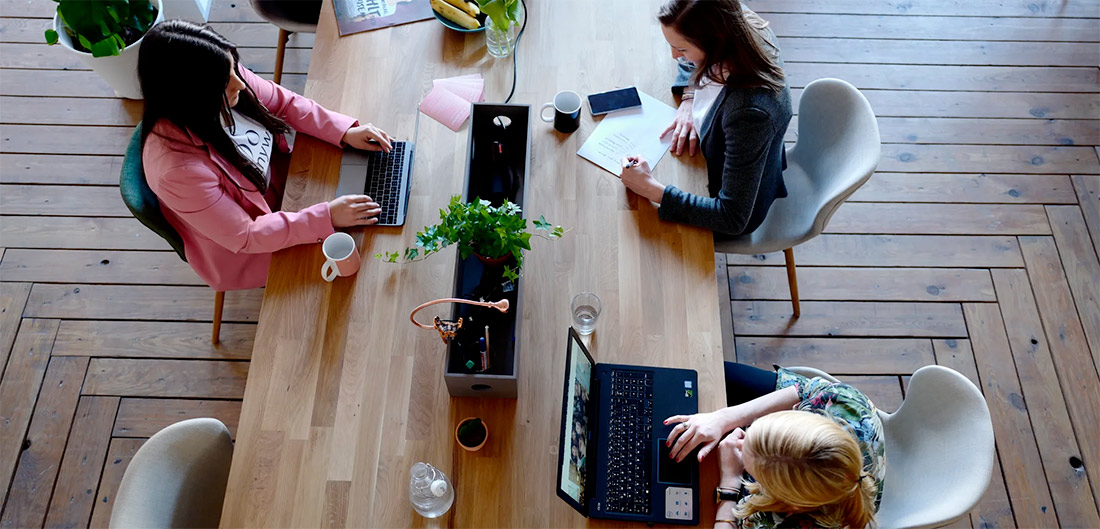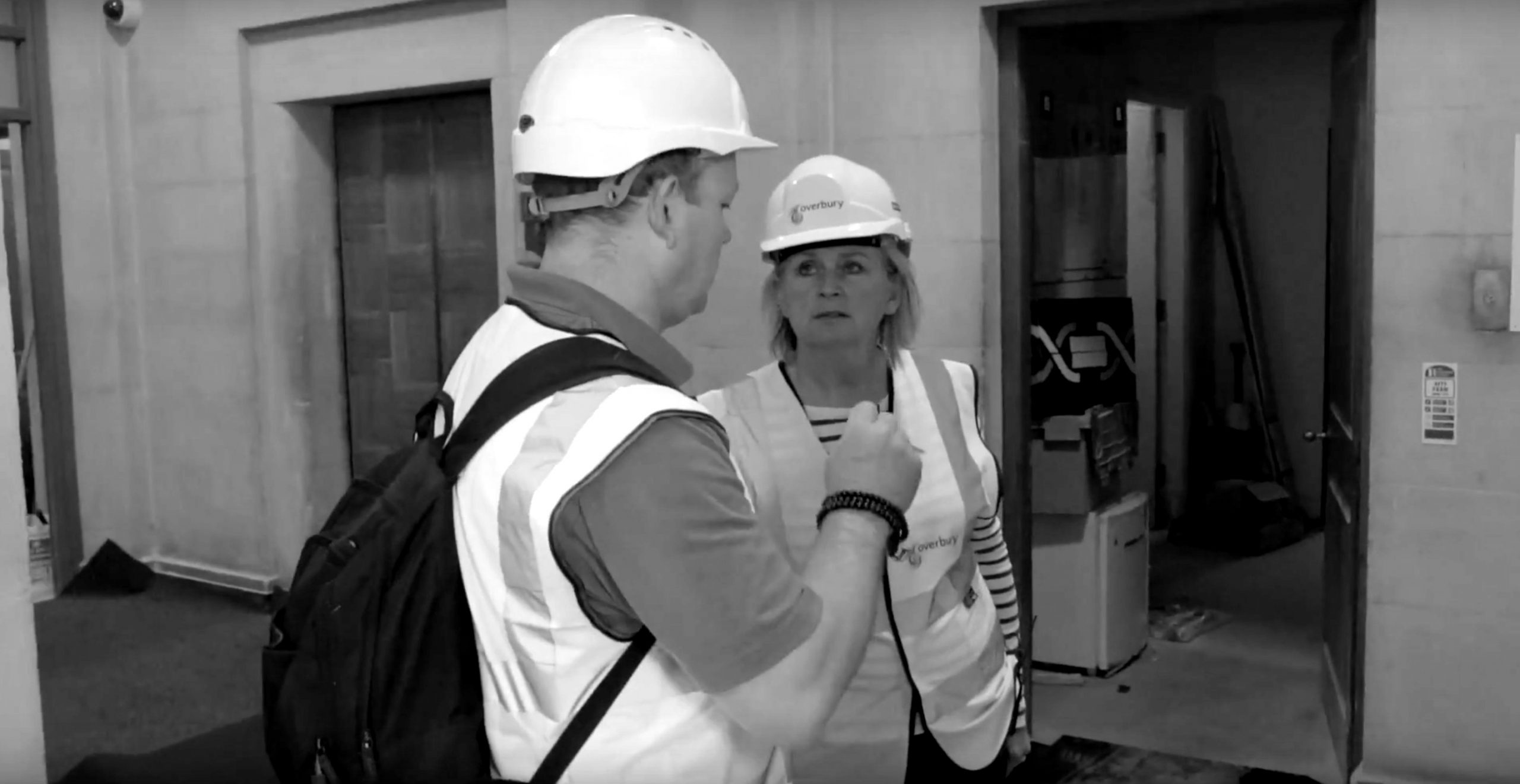— The PLACEmaking blog
After COVID-19: The HQ of the future will be smaller and more adaptable
Author
Alison White and Fintan BurkeDate
July 26, 2020PLACEmaking discusses the future of the workplace after COVID-19, particularly the change of location for the organisation HQ for a flexible workforce.
The HQ of the future will be smaller and more adaptable
In many sectors, the HQ property address was once a form of status symbol and a physical embodiment of the power of the brand and success. For larger organisations having a large corporate Headquarters (HQ) was a sign of prestige, and with a workforce that spent most of its time ‘in the office’ larger buildings in the centre of towns and cities or business parks on the outskirts were considered desirable and the norm.
This COVID-19 global pandemic has already had, and all indications suggest will continue to have, a significant impact on how and where we work. Organisations in many sectors and of all sizes are rethinking their home working policies for the long term and change is becoming embedded. A new ‘blended’ pattern of working is emerging including time spent working from home or in a satellite building with only strategically planned time spent in a major corporate building. Remote working is maturing from the ‘emergency state’ of lockdown in to a new dawn of change and as a result acres of centralised office buildings will continue to sit empty. Has this ended the predictable and reliable office market of the past and how will this new normal way of working actually operate?
With the enforced lockdown came the need for flexibility and innovation and many organisations rose to the emergency challenge, relieved by how quickly their systems adapted and taken aback by how productive their staff continued to be. Feedback from staff surveys clearly demonstrate that whilst missing social interaction with colleagues (interestingly not formal time with management) the perceptions of future ways of working doesn’t include the old pattern of daily commuting and 9 to 5 working in the office. Whilst recognising that for some people a return to regular patterns of living and working is very desirable, many others report that improvements in their work/life balance have exceeded their pre COVID-19 expectations, and they want to maintain these benefits
Some organisations were well positioned with mature technology infrastructure and established practices in managing remote staff that ensured their operational resilience. Others were quick to respond and implemented emergency solutions, keeping their staff functioning whilst they matured their solutions as quickly as possible. Others were more challenged especially organisations who hadn’t acknowledged the trend towards agile working, leaving their support services inflexible and wrong footed in their response to the emergency conditions. Irrespective of the initial response status, what is clear is that organisations large and small need to plan for a new normal and a different future. Any assumption that 100% return to pre COVID-19 ways of working is not physically practical never mind desirable.
Pre COVID-19 organisations were already acknowledging that their expensive offices were grossly underutilised. New patterns of working, technology advancements and younger generational expectations had resulted in office space being empty for large parts of the week. Innovation in the office market was left to the very few with the majority regarding the office simply as an expensive overhead and with evidence that demonstrated it was unutilised the response by many was often predictable – enforced presenteeism. In place of creative meeting places, many offices were more akin to office factories and were regarded as a property issue. With the cost of this overhead being very tangible the continual focus was to drive down the cost of provision, maintenance and operations. The average office was often a dreary de-energising place with a workplace culture that suited a few yet alienated many. Only the relatively few organisations recognised the real value of the office – as a platform to establish personal networks, navigate career development opportunities, reinforce shared values and invest in the organisations well-being. Too often business leaders desired a ‘Google’ like solution without fully appreciating that their own property management culture and established operational systems was focused on simply maintaining business as usual and avoiding any attempt to ‘upset that cart’.
Where once city centre business districts and out of town centre campus-style business parks had been necessary to accommodate their workforce, organisations were already accepting that traditional approach no longer reflected the demands of modern ways of working nor their people’s changed expectations. As a consequence of the pandemic, people now want and expect more control on where and when to work, and they expect to have the employment policy permissions, the support service infrastructure and technology tools to enable this change.
The initial ‘emergency’ phase of lockdown enforced ‘home working’ seemed to galvanise a ‘war time’ acceptance that we’re all in this together and the majority of those unfamiliar with working from home did their very best to keep working, often in far from ideal domestic circumstances. As the weeks past, acceptance of make-do solutions began to wear thin but this was compensated for by the recognition that the daily commute was temporarily suspended and that time was now available for other interests including family commitments. But the realisation that this new way of operating is extended and may be permanent demands more than an emergency home working response. The binary choice of home working verses office working is not an adequate response long term.
All the evidence suggests that working in isolation suits some of us for some of the time but not all of us for all of the time. Where well established work processes have been able to operate during lockdown other aspects and functions of the workplace have been suspended. Inducting new staff, mentoring, implementing new systems and processes, career navigation and creating as well as nurturing the professional networks we all rely on are a key aspect of being part of an organisational, glued together by a common focus of joint enterprise and shared values. Human interaction is needed to nurture an organisation and permanent home working can’t cater for that need.
So, a new model is required. One that is more flexible in terms of organisational real estate investment and overheads and more adaptable in terms of personal use. That suggests that a new role for the centralised office building or HQ will emerge but its function, location and scale will change. Supporting that will be a series of distributed, digitally connected localised Hubs (some dedicated to a single organisation but the majority shared) supported by optional home working.

If the future of the workplace lies in smaller HQs with supporting distributed hubs, how does this model operate and what does it look like?
Even in the ‘new normal’ places will still be important, possibly its value to us will even increase. The HQ function will change, balancing a focus on external reputational promotion and brand enhancement with hosting internal well-being and networking development through cultural physical and/or virtual events. This means the scale of HQs can be slimmed down, affording more choice on the selection of location and proximity to their employees.
In some cases, this may result in organisations deliberately moving further from their employees but closer to their immediate competitors or collocating with brands that they consider will reinforce their own value. Some virtual HQ’s will operate quite effectively whilst others will choose a smaller but yet still physical presence. More innovative thinkers could shed old style defined corporate boundaries altogether, sharing resources and providing open access and informal networking facilities and services to their joint client base enabling their own staff to work alongside their competitors as well as their visiting clients.
Access to such shared spaces would mimic the perceived benefits of business start-up coworking space, helping more established organisations create a competitive yet inspiring environment with the intention of driving innovation and promoting an atmosphere for career progression. This change of approach could help ease recruitment and reduce attrition of high-quality resources. This type of innovation is not exclusive to the HQs.
Forward thinking organisations could also apply this approach across their organisation by promoting their staff to blend home working time with use of shared and local to them, coworking hubs. The benefits are that more senior staff spend time in informal work environments sharing their skills and being refreshed by witnessing new approaches and engaging with people they would previously rarely have encountered. In exchange, they can sign-post routes to those with less well-developed business know-how, offering experience based advice and support. By supporting a shared Hub environment, businesses and organisations would secure the opportunity to access something that can be difficult to create artificially: innovation. Co-working spaces that house multiple organisations from different industries and specialities will be fertile ground for the speedy development of new ideas with quick access to market opportunities. Potentially a win-win situation.
Are there any constraints?
Property related change has in the past taken time to implement. The infrastructure that operates the office property market is well established and has been reliably lucrative for agents, property owners, providers of leased space and the service sector for many decades. Legislation associated with the office workplace has become increasingly wellhoned including Health & Safety, Fire and emergency planning with clear rules associated with building capacities and frequent evacuation rehearsals. Much of that legislation has not kept pace with changing working patterns and workstyles, assuming a continued pattern of use and function of the office where people arrive, stay for most of the day sitting at a desk and then go home. Out sourcing of the operational management of offices has become a significant service industry and attempting to control the cost of service provision has resulted in a race to reduce building operational costs, often by minimising the quality of the experience by building users and their changing demands.
Changing the way an organisation intends to operate, shifting the predictable pattern of office use to something more relevant to the post COVID-19 environment needed will require more than just the decision to abandon the office and instruct everyone to adopt home working. If businesses want to flourish and not simply survive there needs to be a shift in the well-established operating model, requiring the repurposing of all of these systems if the vision for a new way of working is to be successfully implemented and sustained.
Subscribe to our mailing list
Let's Work Together
Office
Box 18, Boxworks
Clock Tower Yard,
Bristol BS1 6QH

